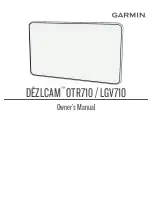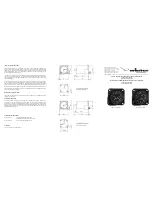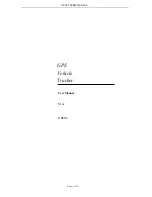
15
ADJUSTMENTS
TRACK TENSION
Figure 21
• Loosen jam nut (
1
) and turn adjusting nut (
2
) to
set track tension. See Figure 22.
Figure 22
• The table below shows the force (
3
) applied
and the deflection (
4
) which must occur to
correctly set track tension. See also Figure 24.
• Measure and adjust track tension using a
tension testing tool and a flat bar. Apply the
recommended pressure (
3
) to measure track
deflection (
4
). See Figure 24.
Figure 23
Figure 24
BASIC TUNING
• Higher rubber track tension reduces the risk of
“derailing” and reduces sprocket “ratcheting”.
NOTE: Track tension set too high could cause
premature wear on system components and
is therefore not recommended.
• Lower rubber track tension provides better
traction, a smoother ride and better fuel economy.
Final Check
Ride at slow speed on a distance of about 1.5 km
[1 mile]. Re–adjust as required.
NOTE: In applications where installation of traction
studs is needed, the threaded portion of the
stud to be screwed in the track lug should not
exceed 3/4 inch (19 mm) in length.
NOTICE:
Rubber Track warranty coverage is
terminated upon installation of traction studs.
WARNING
The tensioner assembly bolt must never be
loosened while adjusting the track tension. This
bolt is designed for assembly and alignment of
the tensioner with the frame. The tensioner must
always be realigned when this bolt is loosened.
SEASON
TRACK
FORCE
DEFLECTION
SUMMER
Front
15 kg (33 lb)
19 mm (¾ in.)
Rear
15 kg (33 lb)
19 mm (¾ in.)
WINTER
(snow)
Front
11 kg (24 lb)
19 mm (¾ in.)
Rear
11 kg (24 lb)
19 mm (¾ in.)















































